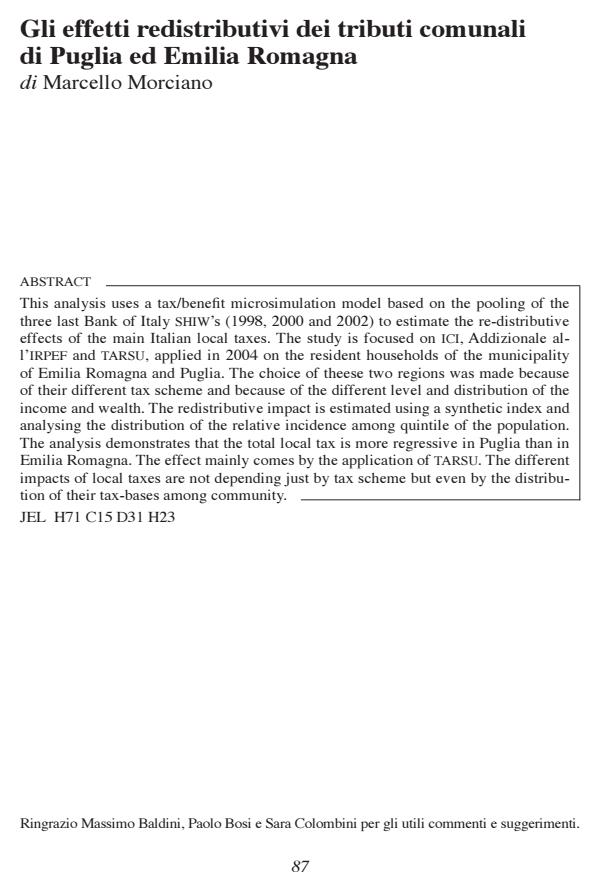Gli effetti redistributivi dei tributi comunali di Puglia ed Emilia Romagna
Titolo Rivista ECONOMIA PUBBLICA
Autori/Curatori Marcello Morciano
Anno di pubblicazione 2006 Fascicolo 2006/3-4 Lingua Italiano
Numero pagine 24 P. 87-110 Dimensione file 3889 KB
DOI
Il DOI è il codice a barre della proprietà intellettuale: per saperne di più
clicca qui
Qui sotto puoi vedere in anteprima la prima pagina di questo articolo.
Se questo articolo ti interessa, lo puoi acquistare (e scaricare in formato pdf) seguendo le facili indicazioni per acquistare il download credit. Acquista Download Credits per scaricare questo Articolo in formato PDF

FrancoAngeli è membro della Publishers International Linking Association, Inc (PILA)associazione indipendente e non profit per facilitare (attraverso i servizi tecnologici implementati da CrossRef.org) l’accesso degli studiosi ai contenuti digitali nelle pubblicazioni professionali e scientifiche
This analysis uses a tax/benefit microsimulation model based on the pooling of the three last Bank of Italy shiw’s (1998, 2000 and 2002) to estimate the re-distributive effects of the main Italian local taxes. The study is focused on ici, Addizionale all’irpef and tarsu, applied in 2004 on the resident households of the municipality of Emilia Romagna and Puglia. The choice of theese two regions was made because of their different tax scheme and because of the different level and distribution of the income and wealth. The redistributive impact is estimated using a synthetic index and analysing the distribution of the relative incidence among quintile of the population. The analysis demonstrates that the total local tax is more regressive in Puglia than in Emilia Romagna. The effect mainly comes by the application of tarsu. The different impacts of local taxes are not depending just by tax scheme but even by the distribution of their tax-bases among community.;
Marcello Morciano, Gli effetti redistributivi dei tributi comunali di Puglia ed Emilia Romagna in "ECONOMIA PUBBLICA " 3-4/2006, pp 87-110, DOI: